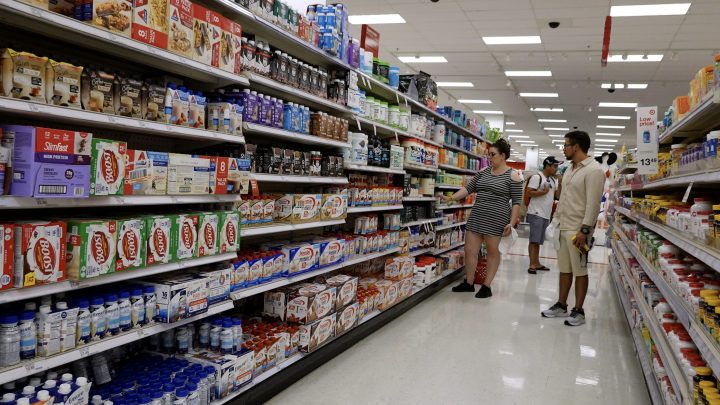
Lower-income consumers are spending less. When will the rest of the economy follow?
Lower-income consumers are spending less. When will the rest of the economy follow?

This economy is taking baby steps, slowing down enough for inflation to hit the Fed’s target. That slowing down depends a lot on what the American consumer decides to do, since, as we point out at Marketplace all the time, the American consumer is responsible for more than two-thirds of the American economy.
Lower-income consumers are already pulling back or switching to cheaper options, according to several retailers that reported their quarterly results this week.
Now, the question is: When will the rest of the economy follow suit?
In other words, how long does it take between consumers having enough of higher prices and cutting back, and an actual economy-wide slowdown?
“This is where you will get the wishy-washy answers from all economists,” said Skanda Amarnath, executive director at the think tank and advocacy organization Employ America.
He said consumer spending is doing better than many CEOs and market watchers expected by now.
“You can call that a slowdown if you want,” he said. “It’s probably the economy is normalizing out after, I’d say three to four years of historic volatility, especially since the onset of the pandemic in 2020.”
But consumers are starting to change behavior due to sustained higher prices, which have drained savings and pushed more people to rely on credit.
“Since the beginning of 2021, the proportion of consumers that have less than $4,000 in their bank accounts today has increased,” said Jennifer White, a senior director at J.D. Power.
“It’s gone from 40% up to 58%. And what that means is that there’s just less money to spend for more than half of the population,” she said.
And that’s bound to eventually show up in the rest of the economy. It’s just hard to pin down exactly when.
Every economic cool down is different, says Joshua Stillwagon, a professor of economics at Babson College.
“But in general, I think, you start to see the pullback in spending, and then the labor market reacts, and then you tend to see it on the inflation side, but you could get an early warning signal from financial markets much earlier than that,” he said.
If they flash red, Stillwagon said the Fed will react — just like it reacts to big macroeconomic data releases, like today’s PCE numbers.
There’s a lot happening in the world. Through it all, Marketplace is here for you.
You rely on Marketplace to break down the world’s events and tell you how it affects you in a fact-based, approachable way. We rely on your financial support to keep making that possible.
Your donation today powers the independent journalism that you rely on. For just $5/month, you can help sustain Marketplace so we can keep reporting on the things that matter to you.











